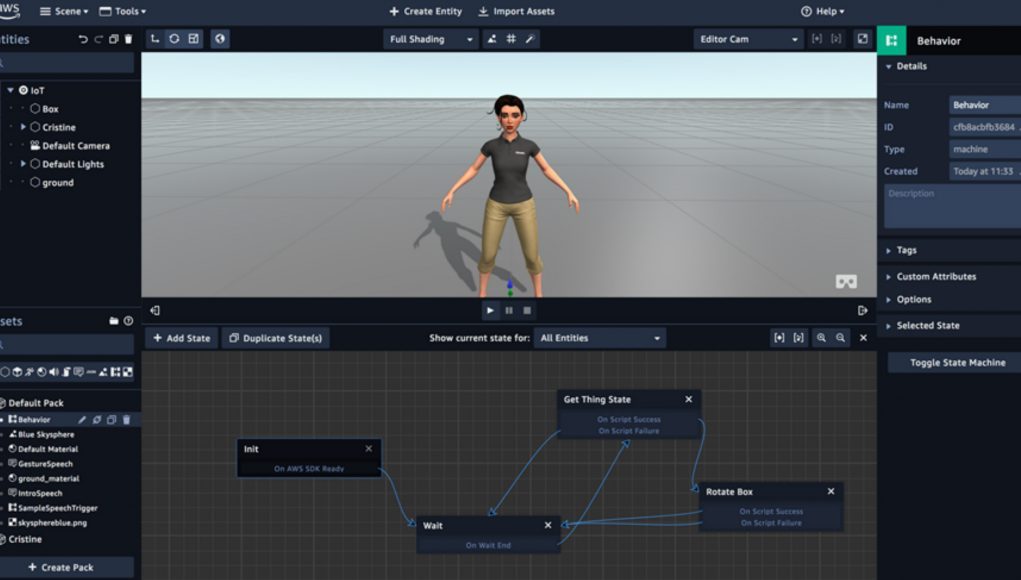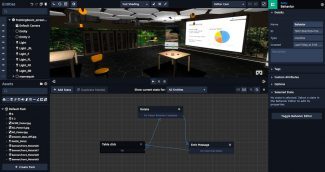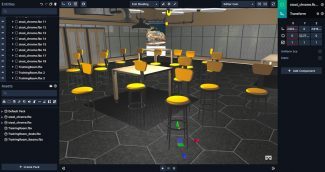Amazon today announced that Sumerian, a tool that aims to make creating web-based applications for VR/AR and traditional monitors an easy process, is now available to the general public. First announced at last year’s AWS re:Invent, Amazon Sumerian touts the ability to easy publish 3D content to any browser that supports WebGL or WebVR graphics rendering, including Daydream, HTC Vive, Oculus Rift, and iOS mobile devices.
Update (05/16/18): Amazon today released Sumerian to the general public. The company has a pricing structure, although at the AWS Free Tier, you can start building VR/AR and 3D projects for free.
“Upon sign-up, new customers can create up to a 50MB published scene that receives the equivalence of 100 views (5GB) per month, for the first 12 months,” Amazon writes in its Sumerian product site.
Virtual assistants through Polly or Lex, scene hosting, and volume of traffic to your project are paid services once you go outside of the free 12-month period however.
The original article follows below:
Original article (27/11/17): Amazon says Sumerian editor lets developers build “realistic virtual environments, populate them with 3D objects and animated characters, and script how they interact with each other and the application’s users.”
The tool is entirely web-based which, just like the VR/AR applications it can generate, means there’s no extra software to install. WebVR is integrated into major browsers including Chrome for Android, Oculus Carmel, Samsung Internet, Opera developer version, Mozilla Firefox and Microsoft Edge.

Sumerian doesn’t require any coding skills to speak of, and includes a drag-and-drop interfaces along with a visual scripting tool to build the logic that controls how the objects and characters in the scenes behave and respond to actions.
Amazon is providing a library of pre-built scenes and objects, along with the ability to create your own objects, or download and import objects from 3D repositories such as Sketchfab or Turbosquid. Sumerian scenes are (of course) hosted on the company’s AWS cloud.
To help attract developers, Amazon is eliminating any upfront costs, although devs will still need to pay for the storage used for 3D assets and the volume of traffic generated to access the virtual scenes they create.
Interestingly, the company is also chumming the waters by integrating Sumerian with some its AI infrastructures—Amazon Lex and Amazon Polly—both of which will provide automatic speech recognition, natural language understanding, and text-to-speech capabilities to applications, meaning VR characters could respond to queries and interact naturally to some degree.
“Customers across industries see the potential of VR and AR technologies for a wide range of uses—from educating and training employees to creating new customer experiences. But, customers are daunted and overwhelmed by the up-front investment in specialized skills and tools required to even get started building a VR or AR application,” said Marco Argenti, Vice President, Technology, AWS. “With Amazon Sumerian, it is now possible for any developer to create a realistic, interactive VR or AR application in a few hours.”
Amazon Sumerian is now available for preview. You can also check out a sample scene here.










